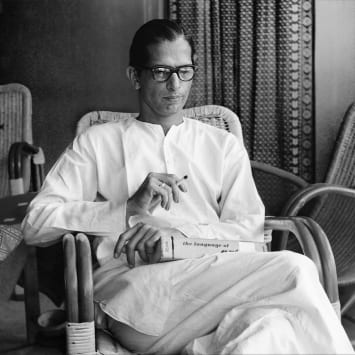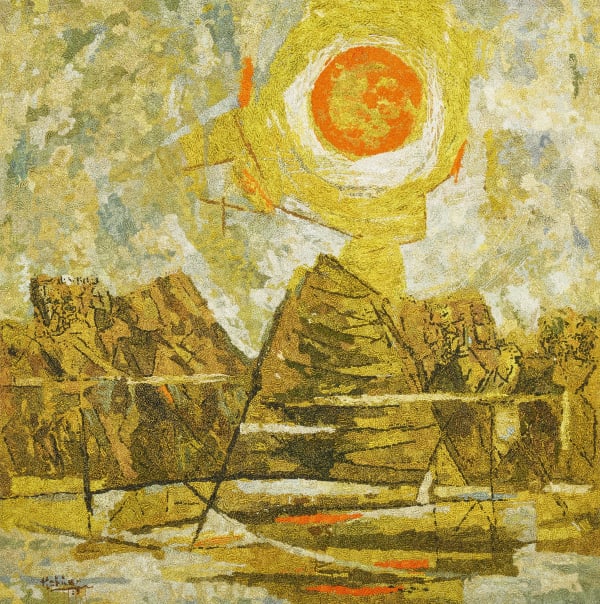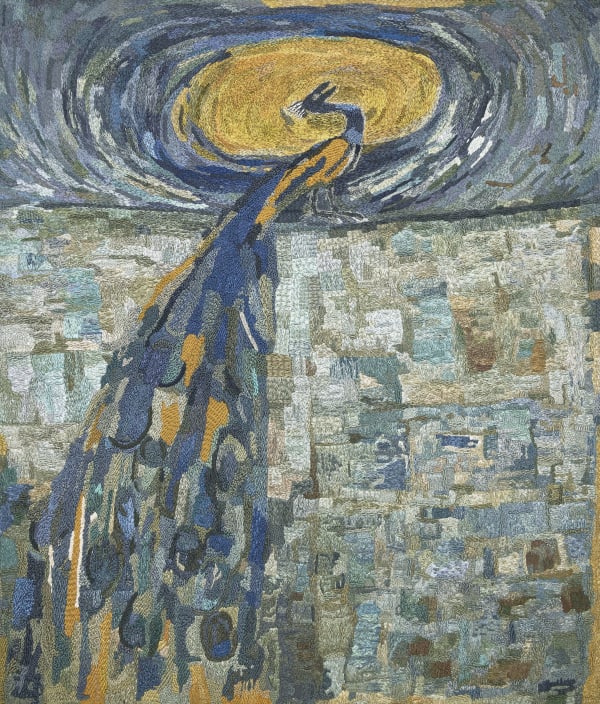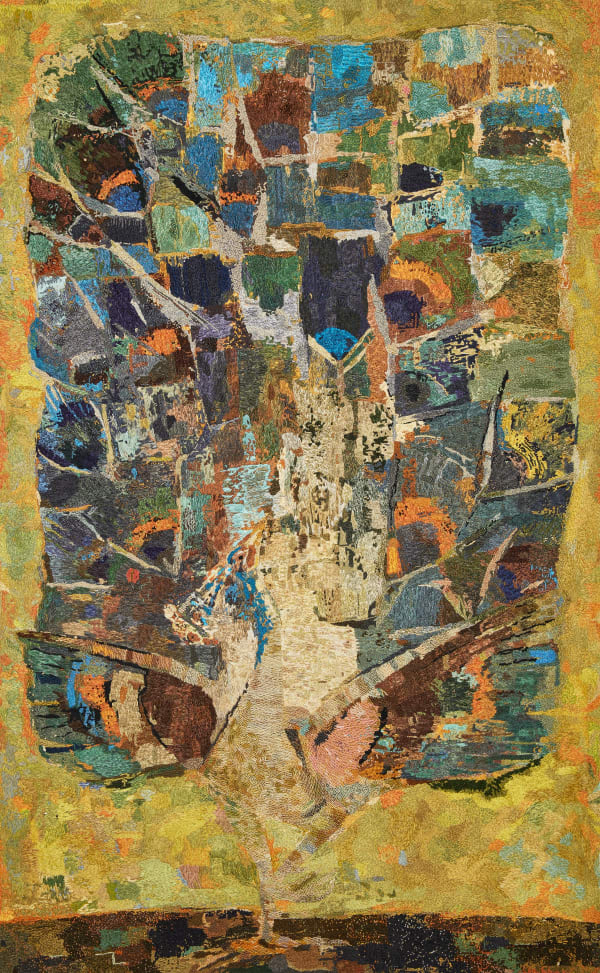K.K. Hebbar (1911–1996), one of India's pioneering modern artists, is renowned for his ability to intertwine the vibrancy of nature with the human experience. His art reflects a profound understanding of the rhythm and balance inherent in the natural world, portraying flora, fauna, and landscapes in ways that resonate deeply with universal themes of life, transience, and joy.
Hebbar’s works are often layered with symbolism, where natural elements like birds, trees, and the moon become metaphors for human emotions, aspirations, and the fleeting nature of existence. His distinctive style, which bridges the gap between the representational and the abstract, captures the beauty and fragility of nature, urging viewers to reflect on their relationship with the environment.
This viewing room celebrates the legacy of K.K. Hebbar, showcasing iconic works reimagined through the meticulous art of hand embroidery. Milaaya Art has translated his evocative brush strokes and vibrant palettes into threads, textures, and stitches, creating an innovative homage to his artistic vision.
-

The Birth of the Moon- 39 x 40 in, 1965 (Embroidered)
-

Untitled (Peacock)- 40 x 30 in, 1987 (Embroidered)
-

Untitled- 51.5 x 28 in, 1968 (Embroidered)
-
K.K. Hebbar’s art is a timeless celebration of the rhythms and patterns of the natural world. His ability to distill the essence of life and nature into evocative visual forms resonates with universal themes of harmony, transience, and joy. The embroidered interpretations of his works by Milaaya Art bring these themes to life in a new dimension, blending artistic tradition with contemporary craft.
Through intricate stitching and a faithful dedication to Hebbar’s vision, these pieces invite viewers to rediscover the beauty and interconnectedness of the world around them. Each work in this collection serves not only as an artistic marvel but also as a testament to the enduring relevance of Hebbar’s philosophy of life and art.







